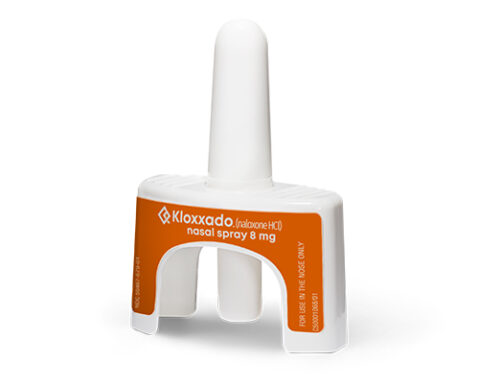The science behind naloxone
Drug overdose is the leading cause of unintentional death in the US, and most of these overdoses involve opioids. Naloxone is a life-saving medicine that can be used to quickly reverse opioid overdose and help the victim start breathing within minutes. Naloxone is available in a variety of forms, including intranasal spray, which virtually anyone can use to save the life of someone suffering an opioid overdose. Read on to learn more about what naloxone is and how it works.
What is naloxone?
Naloxone is a medicine called an opioid antagonist. It can be used to quickly reverse the effects of opioids and help restore breathing in a person who has experienced an overdose. Naloxone was patented in 1961, approved by the US Food and Drug Administration 10 years later and is considered an essential medicine by the World Health Organization. Naloxone is available as an intranasal spray that is easy to carry and use in an emergency situation. One brand of naloxone nasal spray is called KLOXXADO® (naloxone HCl) Nasal Spray 8 mg.
How is naloxone administered?
Naloxone can be given as a shot (in a muscle or under the skin), as an IV (in a vein) or as a nasal spray. The introduction of naloxone nasal spray in 2015 was a critical development because it enabled people without medical training to safely and effectively administer this life-saving medicine.
What happens during an opioid overdose?
Opioids include prescription drugs such as fentanyl, oxycodone (Oxycontin®), hydrocodone (Vicodin®), codeine and morphine, as well as illegal substances such as heroin and illicitly manufactured fentanyl. Opioids work (to relieve pain, for example) by binding to opioid receptors. (Opioid receptors are found on nerve cells throughout the body, including the brain.) When opioids bind to opioid receptors in the respiratory center of the brain, they can potentially interfere with the body’s natural urge to breathe. This situation, which is called opioid-induced respiratory depression, can quickly progress to a decreased level of consciousness. If and when this happens, a person could slip into a coma, suffer brain damage and/or die.
How does naloxone affect opioids?
Naloxone works by moving opioids off the opioid receptors in the brain. When naloxone is administered soon after someone starts experiencing an opioid overdose, the effects of naloxone can begin to work within 1-3 minutes to help restore breathing. Repeat administration of naloxone may be necessary if the person does not respond after 2-3 minutes or if overdose symptoms continue.
What happens if I give naloxone to someone who is not overdosing on opioids?
Naloxone is safe to use even if opioids aren’t present, so it’s best to use even if you only suspect that an overdose is occurring. (If the person is, in fact, overdosing on opioids, naloxone can—but does not always—cause unpleasant opioid withdrawal symptoms like anxiety or irritability and/or nausea or vomiting.)
Does naloxone work on non-opioids?
Naloxone works only on overdoses caused by opioids. It will not reverse overdose resulting from non-opioid drugs such as cocaine. That said, it is important to keep in mind that it is not uncommon for non-opioids to be laced with fentanyl. Some drug dealers do this to enhance the “high” and promote the addictive properties of the substances they sell. It takes only 2 mg of fentanyl to cause a deadly opioid overdose, and when drug dealers misjudge how much fentanyl to add, the results can be fatal. If multiple drugs are suspected to be involved in an overdose, always to try to revive the victim with naloxone.
Who may be at risk of accidental opioid poisoning?
Anyone taking opioids could be at risk for accidental opioid poisoning. You may be at a higher risk of accidental overdose if you take opioids and:
- Have a history of overdose or a substance use disorder (SUD)
- Have sleep apnea or other sleep-disordered breathing
- Are taking higher dosages of opioids (e.g., ≥50 MME/day)
- Are returning to a high dose after losing tolerance (e.g., patients undergoing tapering or recently released from prison)
- Take benzodiazepines with opioids
- Have kidney or liver failure
- Are 65 years and older
If you or someone you live with takes opioids and meets one or more of the criteria above, be prepared. Make sure an intranasal naloxone spray like KLOXXADO® is part of your first aid kit.
Where can I get naloxone?
Your doctor can tell you more about naloxone and may write you a prescription (if naloxone is covered by your health insurance, having a prescription may enable you to get it at a lower cost or maybe even at no cost). Naloxone intranasal spray, like KLOXXADO®, is available at pharmacies across the United States. If your pharmacy doesn’t carry naloxone, they should be able to order it for you. You may also be able to get naloxone through a community program in your city or state.
All trademarks are the property of their respective owners.
Please see the Full Prescribing Information and Medication Guide for KLOXXADO® for complete product details.
NOTE: This article was not written by a medical professional and is not intended to substitute for the guidance of a physician. These are not Emergent’s recommendations, but rather facts and data collected from various reliable medical sources. For a full list of resources and their attributing links, see below.





